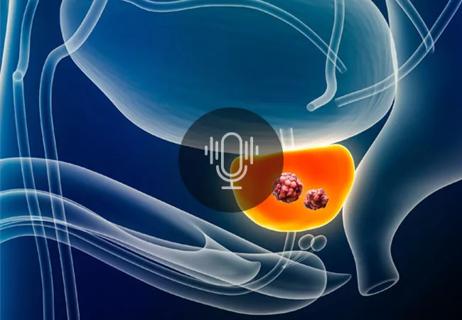A newer modality for select patients has shown positive outcomes to date

As cancer technology evolves, Cleveland Clinic continues to explore the latest modalities to better serve patients and ensure optimal outcomes. This includes the use of irreversible electroporation (IRE), also known as Nanoknife, in select prostate cancer patients. A minimally invasive focal therapy, this approach has shown positive outcomes to date.
Advertisement
Cleveland Clinic is a non-profit academic medical center. Advertising on our site helps support our mission. We do not endorse non-Cleveland Clinic products or services. Policy
Currently, the standard of care for patients with newly diagnosed, localized prostate cancer is active surveillance or whole gland treatments such as radical prostatectomy or radiation, according to Ruben Olivares, MD, Urology Department, who is leading the focal therapy group at Cleveland Clinic.
“In active surveillance, we monitor the cancer closely and intervene if the disease shows signs of progression. The active treatments are curative options such as surgery (radical prostatectomy), external beam radiation or radiation through seed implants (brachytherapy),” he says. “These modalities are highly effective in terms of cancer control, but they may bring significant side effects and deteriorations of quality of life.”
For certain patients with localized disease, focal therapy — an approach that targets the part of the prostate affected by the cancer, while sparing the tissue nearby — may be another option. While focal therapy has not demonstrated the same level of cancer control as surgery or radiation, it may be a reasonable choice for select patients who prioritize minimizing side effects of treatment.
“Adoption of focal therapy becomes more reasonable with the refinements of intra-prostatic tumor imaging due to the advances of multiparametric MRI, advanced genomic testing to gauge which tumors are most dangerous, and newer transperineal biopsy approaches that give us a better idea of the tumor extension and its localization within the prostate gland,” Dr. Olivares notes.
Advertisement
One example of prostate cancer focal therapy performed at Cleveland Clinic is high intensity focused ultrasound (HIFU), which uses thermal energy of sound waves to pinpoint, heat and kill prostate cancer cells. HIFU is a noninvasive, outpatient procedure that leaves healthy tissue unharmed and typically takes about two hours to complete.
Other focal treatments, such as IRE, employ novel non-thermal options to target the cancer. This approach is able to treat some tumors that are more challenging for HIFU, expanding the indications of focal therapy to patients. It uses a short pulse of electrical currents. Probes are inserted through the perineum to break up the membrane’s cells and destroy them, explains Dr. Olivares, while noting that this technology is unique because it preserves the connective tissue and minimizes the destructions of the nerves.
“The strict selection, reviewed in our multispecialty focal therapy tumor board meetings, and patient compliance with follow up remains the cornerstone of our program,” Dr. Olivares emphasizes. “Overall, candidates for focal therapy are patients with localized, intermediate, prostate cancer or selected low-grade patients, with genomics testing suggesting a low risk of progression and a lesion that is visible to the prostate MRI that matches the biopsy findings.”
This minimally invasive outpatient procedure is conducted under general anesthesia in the OR. To avoid muscle contractions during the surgery, patients are given muscle relaxants. IRE involves placing several probes in the perineum based on prostate MRI and image-guided prostate biopsies locations.
Advertisement
“The geometric position of the probes will determine the amount of ablation, then electricity is going to cycle from one probe to the other causing the cell death zone,” explains Dr. Olivares. The total procedure time is less than one hour.
“One of the benefits of this non-thermal energy is that you are not damaging the connective tissue, the collagen structure, the nerves, and the blood vessels, decreasing the swelling and the scar tissue formation. Also, this method of ablation allows for subsequent follow up surgeries, if necessary,” he continues. “Our early experience with IRE at Cleveland Clinic showed a low risk of urinary retention after the procedure.”
Dr. Olivares and colleagues have been using this modality to treat prostate cancer patients who are candidates for focal therapy, but whose tumor location is not amenable for HIFU. For the most part, this includes anterior tumors, tumors crossing midline above the urethra, or with the presence of calcifications that may preclude a good delivery of the energy, Dr. Olivares says.
When asked how this modality meets unmet clinical needs in prostate cancer treatment, Dr. Olivares notes, “Proponents of IRE believe that it causes less collateral destruction because it preserves connective tissue and minimizes the damage of the nerves. Evidence also suggests that this energy lowers the rate of scar tissue formation, thereby lowering the rate of erectile dysfunction, causing less swelling of the prostate and lowering the risk of post-operative retention.”
Advertisement
While IRE is a promising focal ablative technique with acceptable short-term oncological results and minimal morbidity, it should be used cautiously, advises Dr. Olivares, who notes that questions remain regarding the long-term efficacy and safety of this approach. The cancer control observed with focal therapy remains inferior to surgery or radiation.
“Men who choose focal therapy must still undergo follow-up testing to keep a close eye on their cancer,” Dr. Olivares says. “The patient must continue on active surveillance to monitor the oncological effectiveness in the treated area and also to diagnose any other spot of cancer in the non-treated area of the prostate.”
The Cleveland Clinic team is currently collecting data to determine the long-term safety and efficacy of these technologies as well as to gain a better understanding of any potential long-term side effects and recurrence rates. “Based on what we have seen so far, the short-term side effects are certainly acceptable,” notes Dr. Olivares.
“We are heartened by the outcomes we’ve observed with HIFU and now with IRE technology. It’s a testament to advancements in imaging, biopsy, and discoveries in prostate cancer pathology,” he concludes. “Going forward we will continue careful selection of patients and judicious use of the technology.”
Advertisement
Advertisement

Approach offers a ‘middle ground’ between radical prostatectomy and active surveillance

AI histologic classifier reliably predicts clinical risk in men post-prostatectomy

Historic collaboration connects two Cleveland Clinic locations, enables real-time sharing of metrics and surgical progress

Retrospective study evaluates clinical upstaging during neoadjuvant treatment

Patient factors and cancer characteristics are key to deciding between focal therapies and whole gland treatment

Novel research to evaluate noninvasive treatments in ED and chronic pelvic pain

Correlation found between the biomarker HSD3B1 and resistance to combined hormone therapy and radiotherapy

Transperineal ultrasound a viable, non-invasive option for monitoring intra-fractional prostate motion